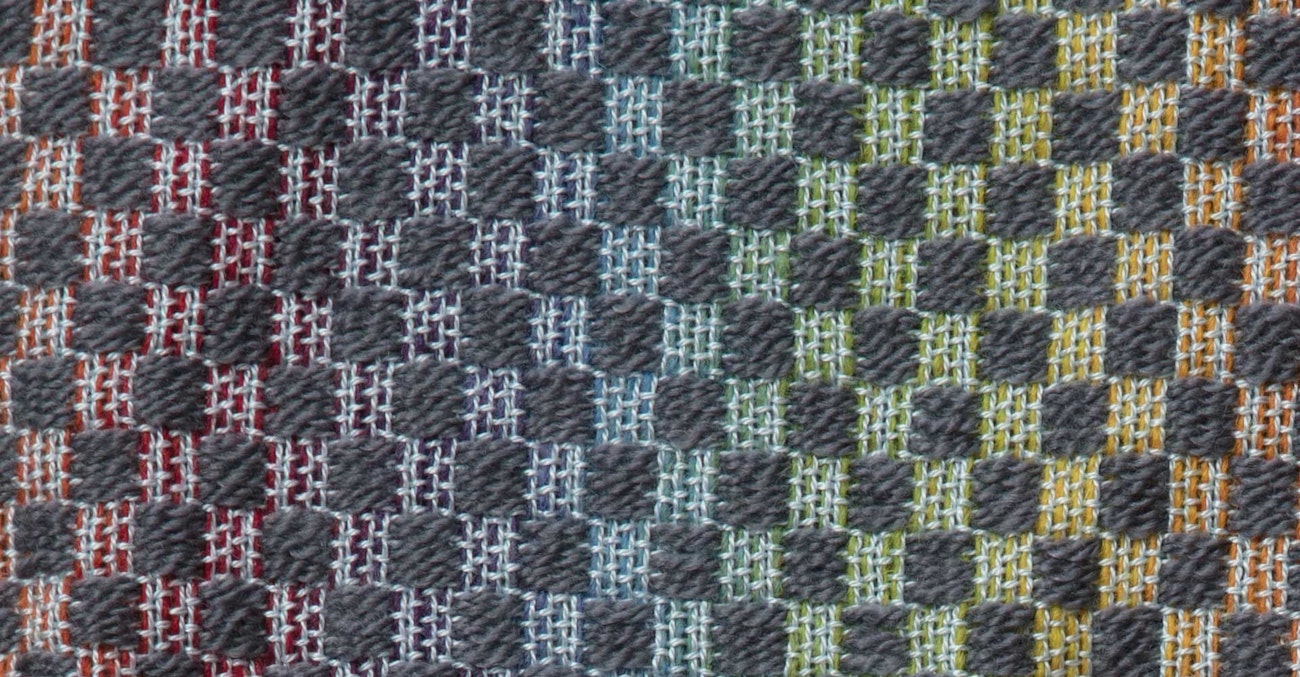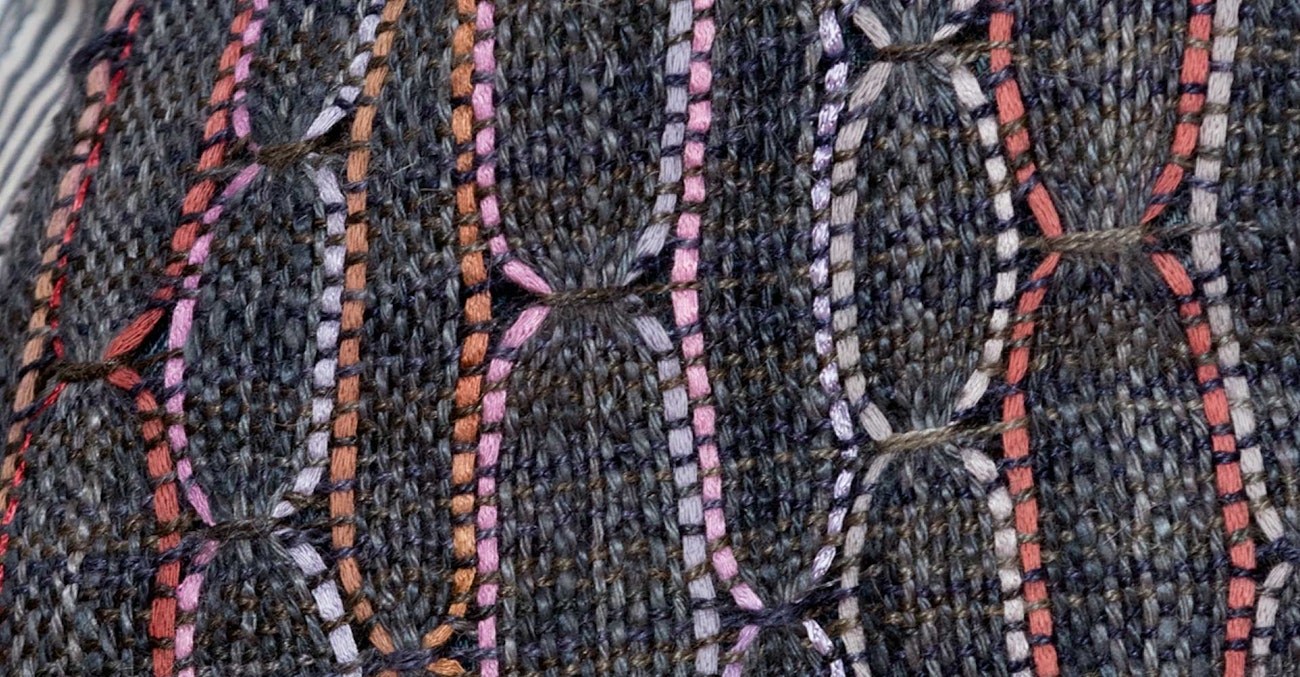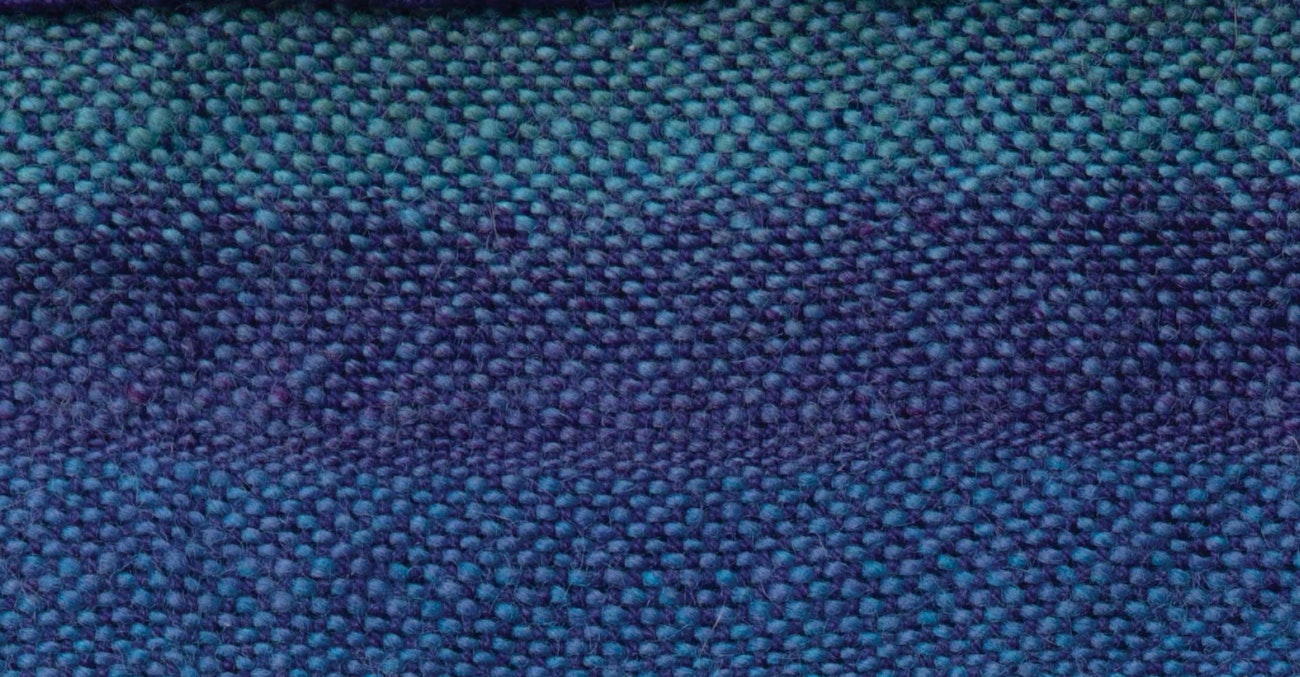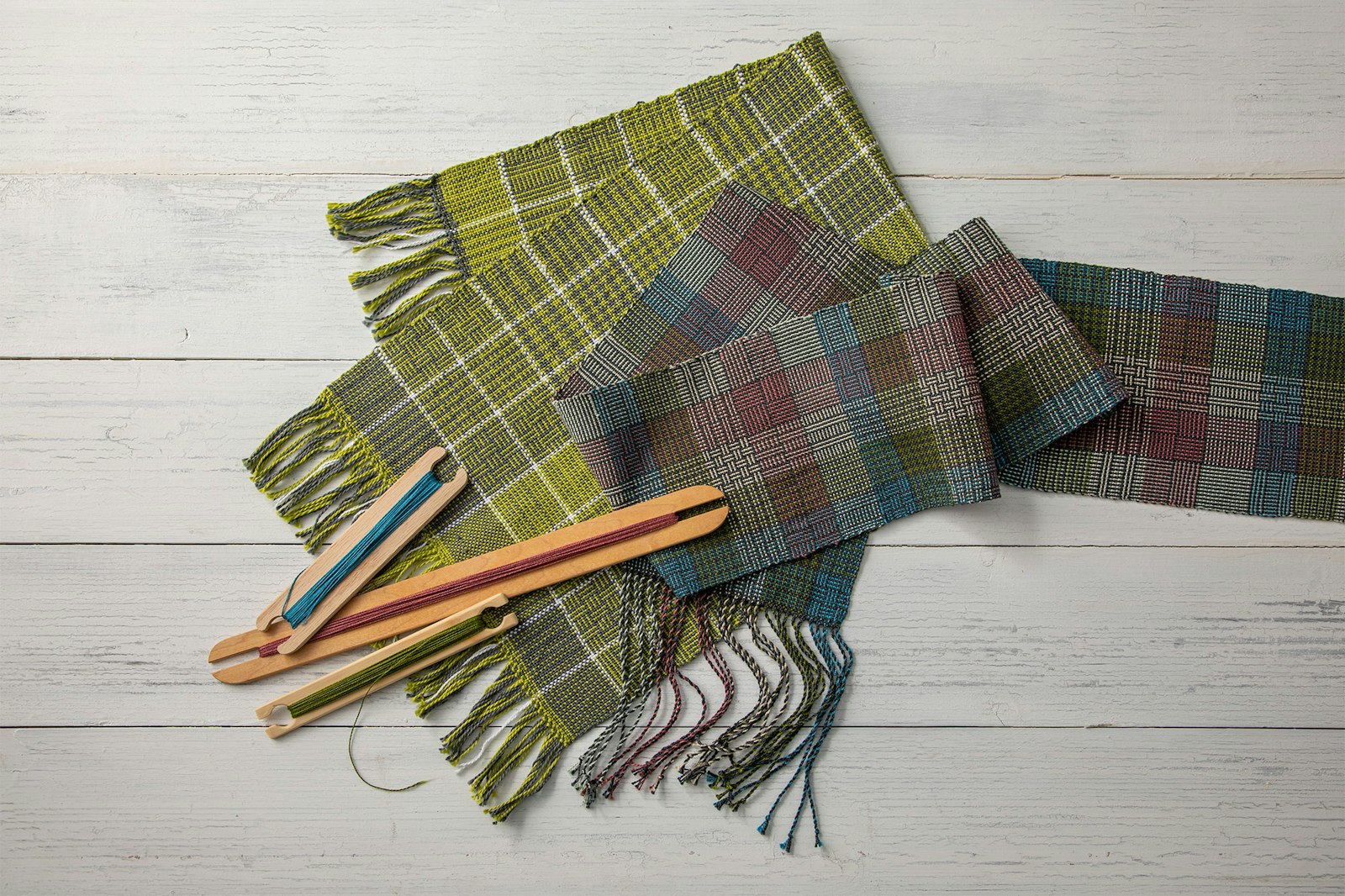Sara Bixler is a master of color. In this article originally published in the Summer 2017 issue of Easy Weaving with Little Looms Sara talks about color-theory basics. To learn more from Sara about color, specifically color-and-weave on the rigid-heddle loom, check out her new course Color-and-Weave on the Rigid-Heddle Loom.
It happens to all of us at some point or another: someone asks a question out of the blue that catches you off guard. I experienced this recently while working in the office with my husband, Dustin. Although he’s been orbiting my world of fiber arts for the last sixteen years, he doesn’t often ask questions regarding what I do for a living. That might seem strange, but I don’t ask him much about what it is he does for a living, either.
There we were, plugging away on our respective computers, when he turned to me and asked, “When you go and give presentations to weaving guilds on color, what exactly are you talking to them about?” At first his question seemed like one that might come from my toddler, another in her endless stream of interrogations on life. I chuckled a bit and inquired why he was asking. He surprised me with his answer, as if it had just come to him that hundreds of men and women across this country have listened to me lecture or have downloaded my webinars. He asked, “Are there really that many people who are interested in color theory?”
For many weavers, color theory is the most challenging facet of the design process. So much of what is written on color theory specifically targets artists using mediums such as paint, paper, and dyes but there is very little on how color is used in weaving. Why is this so different for weavers than other artists? It has to do with how the colors play with one another. As most people know after starting school, perhaps aided by cartoons and Sesame Street characters, the art of color mixing is easy! It’s true that red and yellow make orange when you are physically mixing pigments on a painter’s palette, in the dyepot, or even with food coloring, but on the loom it’s not possible to physically mix threads together. When working with two or more colors during the design process, it’s important to anticipate how those colors will play with one another. Keep a few key concepts in mind when choosing colors for each project.
Yarn comes in all shapes and sizes, and thank goodness it does. Imagine a world where weavers were forced to use the same thread for every project? How limiting! With this wonderful and liberating range of available thread, weavers can choose the most appropriate ones for the desired piece. But several elements affect how colors play with one another.

Weft floats created with a pick-up stick in Sara’s Rainbow Connection Shawl, page 29 of Easy Weaving Little Looms 2017, bring the colorful Kauni yarn to the fore, making it the center of attention and keeping it from getting muddy.
Size
Very thin threads—those generally sett at 20 ends per inch (epi) or higher—mix very well optically. In simple terms, from a certain distance away from a woven fabric, the human eye has a hard time differentiating between the warp and weft colors. For example, if the warp is red, the weft is yellow, the epi and ppi are both 20, a viewer at a relatively close range would perceive orange. A relatable example within the fine art world is the Pointillist work of Georges Seurat: up close, you can see each individual dot, but when you stand back, the magic is revealed. In contrast, looking at a dramatically larger thread (such as a thick wool yarn sett at 8 epi), viewers can pick out the two different colors simply because of the large physical size, unless they stand a considerable distance away.

The yarns in this scarf by Stephanie Flynn Sokolov are woven in a balanced weave, but the combination of thick yarns and the use of hand-manipulated lace make the colorful yarns in the warp pop compared with the gray yarn used in both warp and weft.
Luster
Threads that appear shiny reflect light differently than those that are matte or coarse in composition. Shiny threads more readily trick the eye than matte threads. Woven douppioni silks have a beautiful iridescence. Turn the fabric in one direction and it’s purple; turn it in another and it’s red—magic! This would be somewhere between difficult and impossible to achieve with matte yarns, but woven iridescence can be produced with shiny yarns such as silk, Tencel, rayon, and even mercerized cottons.

In this plain-weave yoga bag by Constance Hall, page 28 of Easy Weaving With Little Looms, 2017, a fine warp is paired with a thicker weft to emphasize the slow striping pattern in the latter.
Weave Structure
Using a balanced weave such as plain weave produces an equal representation of colors in both warp and weft. In contrast, when a structure or weaving technique results in longer floats—individual threads that travel over the surface of the fabric—the eye may not be able to mix the two colors together as easily. Keep this in mind when working with inlay, pick-up, and some hand-manipulated laces. It may be very important, especially if you want to “show off” a special yarn in the warp or weft.
While this just scratches the surface of color theory for weavers, these simple rules and points of consideration can help weavers both new and experienced. Taking them into consideration during the design process will help ensure that the woven cloth comes out as planned and eliminates at least some of the unknowns.
Be bold, take risks, and learn through color exploration. It’s a fun journey.
First publioshed 6/30/2022; updated 9/18/2024

